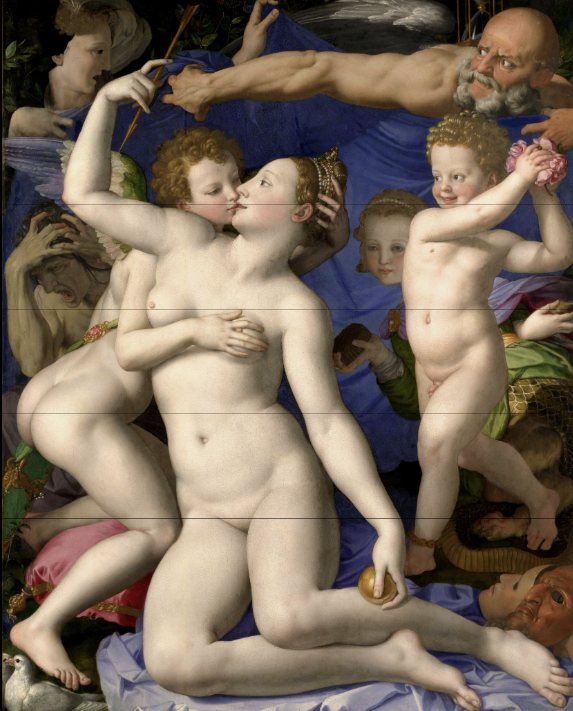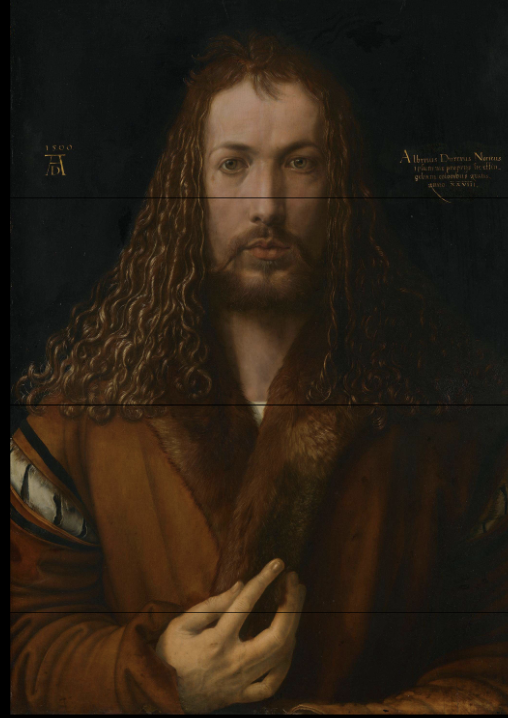Mannerism and Northern Renaissance
1/20
There's no tags or description
Looks like no tags are added yet.
Name | Mastery | Learn | Test | Matching | Spaced |
|---|
No study sessions yet.
21 Terms
What was one thing that caused the mannerism period?
during high Renaissance, the top 3 artists brought Renaissance to their peak
younger artists had to do something different
decided to exaggerate and distort
What was the second causal for the Mannerism period?
in 1527 Rome was violently sacked
this deeply affected the culture
a broader instability developed
Italian humanists questioned logic, reason, order
+ Protestant revolution was spreading across Europe
challenging authority of the Church
Recap: What were the 2 main reasons for Mannerism?
Response to unreachable perfection of High Renaissance ('We have reached the peak so we need to pivot')
General anxiety of the times (political crisis and disillusionment)
What is Mannerism art?
art becomes stylized, theatrical, dramatic
imblaanced compositions
asyymetrical arragement
unclear separation between levels
ambiguous settings
unusual representation of very-known themes
distortions (scale, perspective)

Angelo Bronzino, Venus, Cupid, Folly and Time, c. 1545. Oil on wood.
textbook example of Mannerist painting
figures are condensed and pushed towards front of canvas/foreground
ambiguous space
no one point linear persepctive
manipulation of space
theatrical
curtain backdrop
masks displayed
distortion of proportions
elongated
cupid’s neck is unusually long
playful, erotic, risqué themes
Cupid and Venus share a kiss
multiple interpretations
How was Mannerism involved in architecture
classical elements of architecture in a playful, unorthodox way
rejected balance, order, unity
often used columns on buildings that looked important but they did not support any part of the building
e.g. Romano, Palazzo
keystones (typically structural elements) are popping out, falling out of building
When and where was the Northern Renaissance centralized?
peak in 15th and early 16th century
centered in Northern Europe (France. Belgium, Netherlands, Germany)
distinct movement from Italian Renaissance
What were the two Northern Renaissance technical developments?
oil painting
print making
What was going on historically during 15th century? How was art doing?
great social and political turmoil
widespread conflict
100 years war between France and England
great economic development
trade between cities
art thrives
private patronage commissioned art and fuelled Northern Renaissance
Who was the inventor of oil painting? What did oil painting allow for?
Jan van Eyck
first dutch painter to receive international credit
oil paints allows for more minute and detailed works
oil paints can be layered
richer colours and saturation

Hubert and Jan van Eyck, Ghent Altarpiece, Saint Bavo Cathedral, Ghent, Belgium, ca. 1423-1432. Oil on wood.
altar piece commissioned for private chapel
open or close the piece based on circumstance
depicts donors and sculptures
religious scenes
level of detail to surfaces and textures
recording with exactitude
What occurred in art with the emergence of capitalism and a wealthier middle class?
merchant class becomes more wealthy
fuels growing market for art
in particular secular art
not religious art
portraiture of specific, identifiable figures
testimony of social importance and wealth
What did Jan van Eyck start for signing portrait?
artists began signing their works or painting themselves in it
start of self-portraiture in order to underscore their importance
making record of an important event and signifying that the artist was there
What was the start of the printing press?
print making
carving a wood block, cover it in ink and press it against desired surface to get mirror image
subtractive process
serial production of images
wood carving is limited
led to scribes and manuscripts
What came after wood block print pressing?
wood replaced with metal carving
allowed for more subtle line work and hatching
distinctive shadows and textures
more detailed
How did print pressing allow for expansion of work and economic success for some artists?
prints on paper are more affordable and portable
can reach wider audience through circulation
paper is cheaper than canvases
Durer used print making to achieve international fame

Who was Dürer? How is he represented in this self-portraiture?
Albrecht Dürer, Self Portrait, 1500. Oil on wood.
he travelled to Italy
believed in artists being of high value and not just craftmen
he appears noble and Christ-like
wearing a fur coat to show wealth
illuminated with a divine glow
symmetrical and centered
he is idealized (no wrinkles or aging)
gaze is assertive
What are features of Durer’s prints? How are they representative of the Italian Renaissance?
figures are muscular and tense
relationship between figures
contrapposto for movement or anticipation
How was the state of the world and protestant reformation shown in Durer’s works?
despite being into Italian development he felt compelled to follow Luther and support Protestant ideas
in his works he pushes Saint Peter behind John the Evangelist
What was the shift in art of the Northern Renaissance and Luther?
increased focus on secular subjects
still-lives, genre scenes depicting everyday life
The Hunters in the Snow painting
communal activities
focus on daily life and the mundane
private patronages
echoes principles of reformation

Pieter Bruegel the Elder, Netherlandish Proverbs, 1559. Oil on wood.
focused on the peasant life
not biblical or mythological
folk proverbs
man beats his head against wall
man shoots one arrow after another but hits nothing
monk ties a fake beard to face of Christ (critique of Catholic church)
man gnawing on pillar (exhibiting excessive religious zeal)